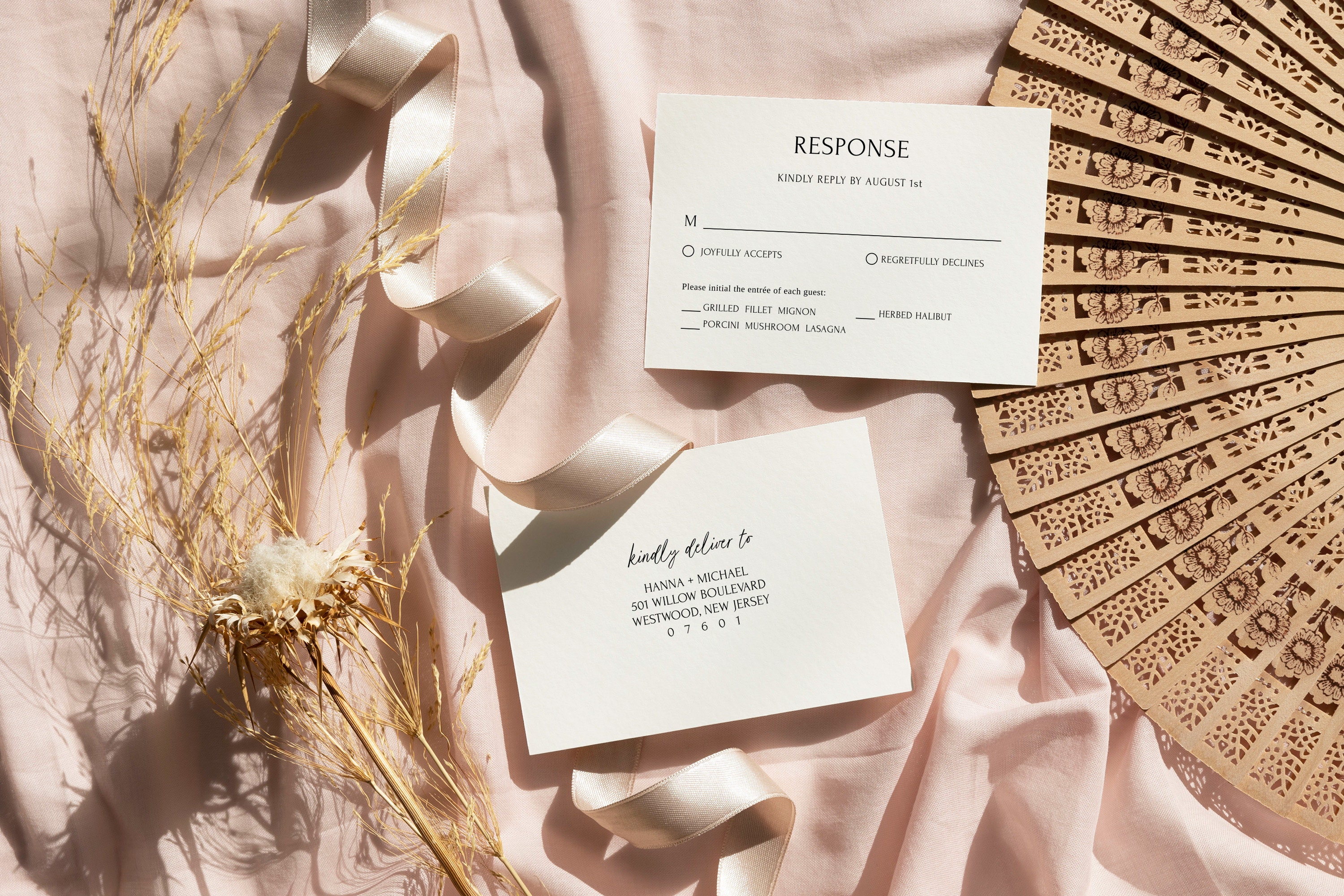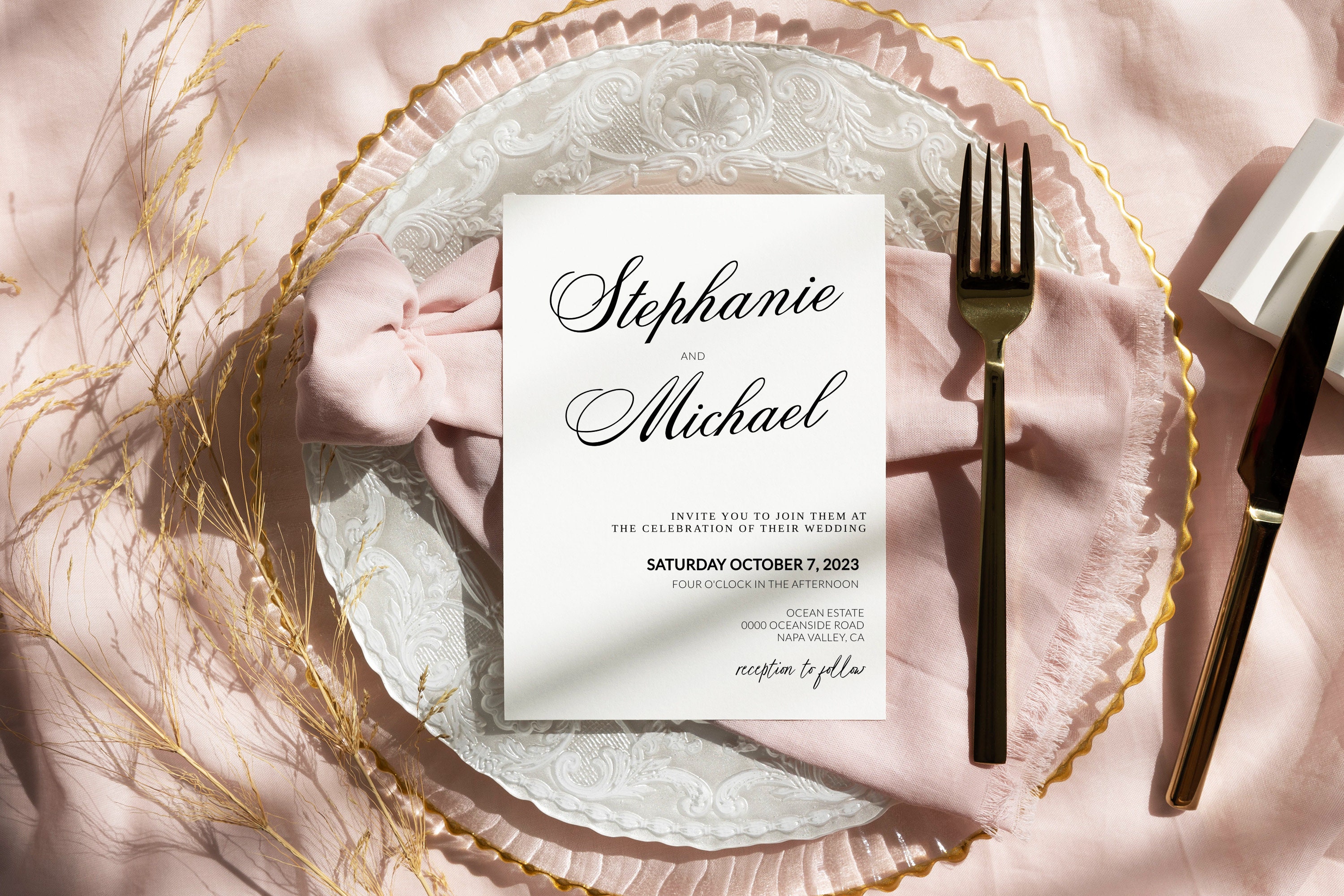From Ink to Digital: The Evolution of Wedding Invites
페이지 정보
작성자 Demi 작성일23-12-16 08:53관련링크
본문
The history of wedding invitations is a captivating journey that has transitioned from handwritten notes to contemporary digital designs. In bygone eras, couples would proclaim their upcoming nuptials through intimate gatherings, a tradition that predates printed invitations.
During the Middle Ages, with the advent of parchment and quills, formal wedding announcements began to emerge. These typically ornate handwritten notes were limited to the elite, as paper was a luxury. Yet, as paper became more accessible, the bourgeoisie took to this practice, incorporating their own touches to the design and content.
In the 1700s, printing presses transformed the game. Invitations became uniform, with engraved fonts and ornate borders. This era also saw the onset of the classic "request the honor of your presence" phrasing, a tribute to the formality of the occasion.
The 19th century brought about further evolution in wedding invitation design. Given the rise of romanticism, invites began to feature botanical illustrations and gentle color palettes. Furthermore, etiquette books came into play, defining the dos and don'ts of wedding invitations.
Moving on to the 20th century, the onset of cameras and later, color printing, brought forth photo-based wedding invites. Couples could now showcase their love stories through intimate snapshots, giving a personal touch to their announcements. This era also experienced the growth of self-made cards, as craft supplies became readily obtainable.
 Enter the digital age. The 21st century has reshaped wedding invitations with the emergence of e-invites. These electronic invitations enable couples to reach out with guests in real-time, offering interactive features like RSVP tracking, integrated maps, and even video clips. Moreover, the sustainability of e-invites resonates with many modern couples mindful of their environmental impact.
Enter the digital age. The 21st century has reshaped wedding invitations with the emergence of e-invites. These electronic invitations enable couples to reach out with guests in real-time, offering interactive features like RSVP tracking, integrated maps, and even video clips. Moreover, the sustainability of e-invites resonates with many modern couples mindful of their environmental impact.
In conclusion, the journey of wedding invitations from quill to pixel is a reflection of cultural changes and technological advancements. Even though the medium may evolve, the core of wedding invitations _ celebrating love and union _ remains unchanged.
If you have any questions relating to in which and how to use Modern Bridal Shower, you can speak to us at our own website.
During the Middle Ages, with the advent of parchment and quills, formal wedding announcements began to emerge. These typically ornate handwritten notes were limited to the elite, as paper was a luxury. Yet, as paper became more accessible, the bourgeoisie took to this practice, incorporating their own touches to the design and content.
In the 1700s, printing presses transformed the game. Invitations became uniform, with engraved fonts and ornate borders. This era also saw the onset of the classic "request the honor of your presence" phrasing, a tribute to the formality of the occasion.
The 19th century brought about further evolution in wedding invitation design. Given the rise of romanticism, invites began to feature botanical illustrations and gentle color palettes. Furthermore, etiquette books came into play, defining the dos and don'ts of wedding invitations.
Moving on to the 20th century, the onset of cameras and later, color printing, brought forth photo-based wedding invites. Couples could now showcase their love stories through intimate snapshots, giving a personal touch to their announcements. This era also experienced the growth of self-made cards, as craft supplies became readily obtainable.
 Enter the digital age. The 21st century has reshaped wedding invitations with the emergence of e-invites. These electronic invitations enable couples to reach out with guests in real-time, offering interactive features like RSVP tracking, integrated maps, and even video clips. Moreover, the sustainability of e-invites resonates with many modern couples mindful of their environmental impact.
Enter the digital age. The 21st century has reshaped wedding invitations with the emergence of e-invites. These electronic invitations enable couples to reach out with guests in real-time, offering interactive features like RSVP tracking, integrated maps, and even video clips. Moreover, the sustainability of e-invites resonates with many modern couples mindful of their environmental impact.In conclusion, the journey of wedding invitations from quill to pixel is a reflection of cultural changes and technological advancements. Even though the medium may evolve, the core of wedding invitations _ celebrating love and union _ remains unchanged.
If you have any questions relating to in which and how to use Modern Bridal Shower, you can speak to us at our own website.


 > 고객센터 > 입금자 확인
> 고객센터 > 입금자 확인